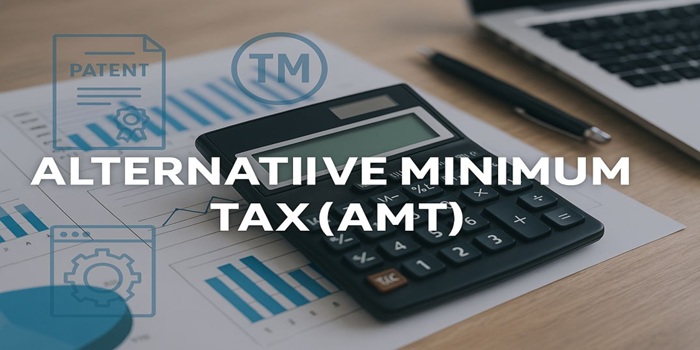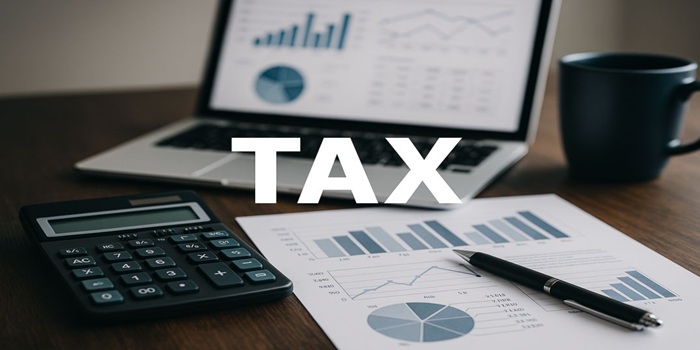
Understanding the Canadian tax system can be complex, especially when it comes to specialized tax rules like the Alternative Minimum Tax (AMT). Many taxpayers and even some professionals find themselves puzzled by what is alternative minimum tax, how the alternative minimum tax Canada operates, and why they might end up paying more taxes under this regime than under the regular tax system.
At SRJ Chartered Professional Accountants, we recognize how important it is for individuals and businesses to understand the minimum alternate tax, commonly called AMT, how it is calculated, and strategies to manage its impact. This comprehensive guide will clarify the basics of AMT, explain how it differs from regular income tax, highlight who it affects, and offer insights on planning around it.
What Is the Alternative Minimum Tax (AMT)?
The Alternative Minimum Tax (AMT) is a parallel tax calculation system designed to ensure that taxpayers who benefit from certain deductions, credits, or tax shelters still pay a minimum amount of tax. In Canada, it acts as a safeguard preventing high-income earners, particularly those with significant deductions or tax preferences, from paying very little or no income tax under the standard tax rules.
Put simply, the AMT recalculates your taxable income by adding back specific tax preferences and deductions that are allowed under the regular tax system. If the AMT amount exceeds your regular income tax, you must pay the higher AMT amount.
This tax is often confusing because it requires taxpayers to do two calculations — one under the regular income tax system and one under the AMT system — then pay the greater of the two.
How Does Alternative Minimum Tax Canada Work?
The Canadian AMT system adjusts your income by adding back certain “tax preference items” to compute your alternative minimum taxable income (AMTI). These items may include:
- Large non-capital losses
- Investment tax credits
- Certain types of capital gains
- Cumulative eligible capital deductions
- Carry-forward of limited partnership losses
Once the AMTI is calculated, it is subject to a lower AMT tax rate than regular income tax, but without many of the deductions and credits allowed in the regular system.
For the 2025 tax year, the federal AMT rate is 20.5% over the initial exemption of $177,782. Provinces also have their own AMT rates that add to the federal AMT.
If your calculated AMT is higher than your regular tax liability, you pay the AMT amount. If your regular tax is higher, you pay the regular tax.
Why Was the Minimum Alternate Tax Introduced?

The minimum alternate tax was introduced to close loopholes in the tax system that allowed some high-net-worth individuals and corporations to reduce their taxable income significantly through deductions, credits, or deferrals. Without the AMT, these taxpayers might pay minimal or zero taxes despite substantial economic income.
By applying the AMT, the Canadian government ensures a minimum level of tax is paid by taxpayers benefiting from preferential tax treatments.
How Does AMT Differ From Regular Income Tax?
While the regular income tax system allows numerous deductions, credits, and preferential treatments to reduce taxable income, the alternative minimum tax Canada recalculates taxable income by adding back some of these items.
Key differences include:
- Deductions and Credits: Regular tax allows many deductions and credits that reduce taxable income and tax payable. AMT adds some back, limiting these benefits.
- Taxable Income Calculation: AMT uses alternative minimum taxable income (AMTI), which is typically higher than regular taxable income due to added-back preferences.
- Tax Rates: AMT rates are generally lower than the highest marginal tax rates but are applied to a larger base (AMTI).
- Tax Payable: Taxpayers pay whichever is higher: their regular tax or AMT.
How Many People Pay Alternative Minimum Taxes?
In Canada, the number of taxpayers paying AMT is relatively small compared to those paying regular income tax. The AMT primarily affects:
- High-net-worth individuals who use multiple tax shelters or deductions.
- Taxpayers with significant capital gains or dividend income.
- Investors who claim certain investment tax credits or non-capital losses.Corporations with large tax preference items.
While AMT is designed to target a niche group, its impact can be significant for those subject to it, resulting in a higher-than-expected tax bill.
What Income Triggers the AMT in Canada?
There is no single income threshold that triggers AMT, as it depends on your specific tax situation, deductions, credits, and preferences. However, certain factors can increase the likelihood of paying AMT:
- Claiming large capital gains exemptions or deferrals.
- Utilizing multiple investment tax credits.
- Having substantial non-capital loss carryforwards.
- Earning high dividend income from private corporations.
- Claiming deductions for limited partnership losses.
The more of these tax preferences you claim, the higher your alternative minimum taxable income (AMTI) may be, making AMT payable.
Does the AMT Apply to Capital Gains and Dividends?
Yes, capital gains and dividends can affect your AMT liability. Some capital gains might be added back to calculate AMTI, especially if they benefited from preferential tax treatment. Dividend income, particularly from private corporations, is also included in the AMT calculation since certain credits or exemptions can reduce regular tax but are added back under AMT.
However, not all capital gains and dividends are treated the same. The treatment depends on the source, type, and any tax preferences applied.
How Can High-Net-Worth Individuals Plan Around AMT Liabilities?
At SRJ Chartered Professional Accountants, we emphasize proactive tax planning to minimize AMT impact. Strategies include:
- Reviewing and optimizing tax credits and deductions: Carefully evaluate which credits or deductions might trigger AMT.
- Timing of income realization: Spread capital gains over multiple years rather than realizing a large gain in one year.
- Using tax-deferred accounts: Maximize contributions to RRSPs and TFSAs to reduce taxable income.
- Structuring dividend income: Consider dividend timing and the corporation’s payout strategy.
- Utilizing AMT credits: AMT paid in a year may generate a credit usable in future years when regular tax exceeds AMT.
Effective planning helps reduce unexpected AMT liabilities and improves after-tax returns.
What Is the Alternative Minimum Tax Canada Calculator?
To help taxpayers estimate their potential AMT liability, online alternative minimum tax Canada calculators are available. These tools calculate your AMT based on your income, deductions, and credits, helping you anticipate if AMT applies and how much you might owe.
While online calculators provide useful estimates, consulting a professional accountant ensures accuracy, as AMT calculations can be complex and dependent on specific tax situations.
Frequently Asked Questions (FAQs)
How does AMT differ from regular income tax?
The AMT recalculates taxable income by adding back certain tax preferences disallowed under the regular tax system. Taxpayers pay whichever is higher: the AMT or regular tax. The AMT limits the benefit of certain deductions and credits to ensure a minimum tax is paid.
Why am I paying alternative minimum tax?
You may pay AMT if your tax preferences (such as deductions, credits, or capital gains exemptions) significantly reduce your regular tax below a minimum threshold. AMT ensures that you still pay a baseline tax despite these benefits.
How many people pay alternative minimum taxes?
Only a minority of Canadian taxpayers pay AMT, primarily those with complex tax situations, large investments, or significant tax shelter claims.
What income triggers the AMT in Canada?
There’s no fixed income threshold, but AMT is more likely if you have large capital gains, dividend income, investment tax credits, or losses carried forward.
How can high-net-worth individuals plan around AMT liabilities?
By timing income, optimizing deductions and credits, using tax-deferred accounts, and utilizing AMT credits, high-net-worth individuals can manage their exposure to AMT.
Does the AMT apply to capital gains and dividends?
Yes, certain capital gains and dividend income can trigger AMT, especially if they received preferential tax treatment under the regular system.
Conclusion
The Alternative Minimum Tax (AMT) is a critical, yet often misunderstood part of the Canadian tax system designed to ensure that taxpayers benefiting from various tax preferences still pay a minimum level of tax. Understanding what is alternative minimum tax, how alternative minimum tax Canada works, and who it affects can help you avoid surprises on your tax bill.
At SRJ Chartered Professional Accountants, we specialize in navigating complex tax rules like the AMT, providing personalized advice, strategic planning, and accurate tax filing to minimize liabilities and optimize your financial outcomes.
If you suspect you may be subject to AMT or want to understand how it impacts your tax situation, contact SRJ Chartered Professional Accountants today. Our experts can help you use the alternative minimum tax Canada calculator, review your tax position, and implement strategies tailored to your needs.
Let SRJ Chartered Professional Accountants be your trusted partner in mastering Canadian taxes — including the Alternative Minimum Tax — so you can focus on growing your wealth with confidence.